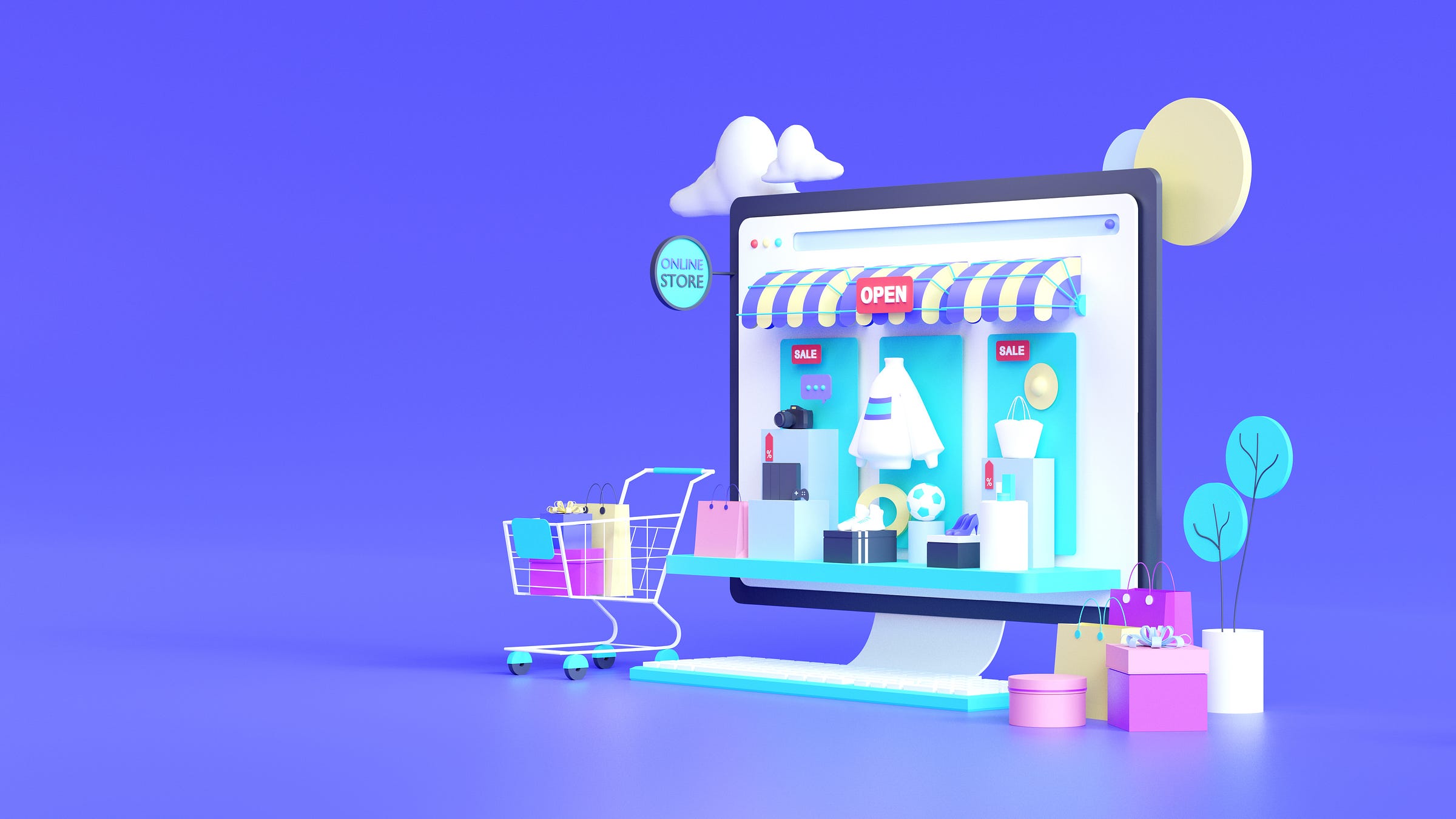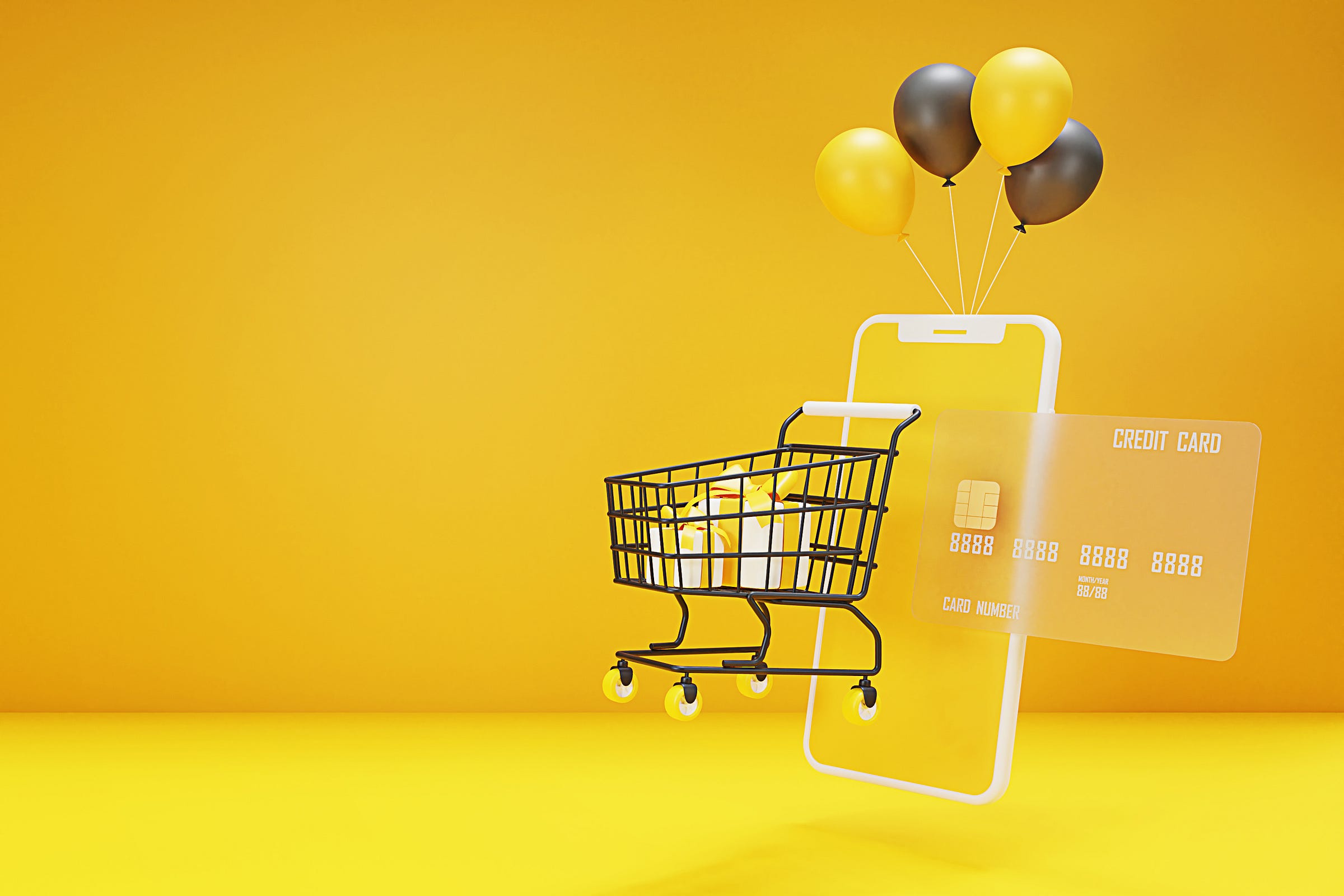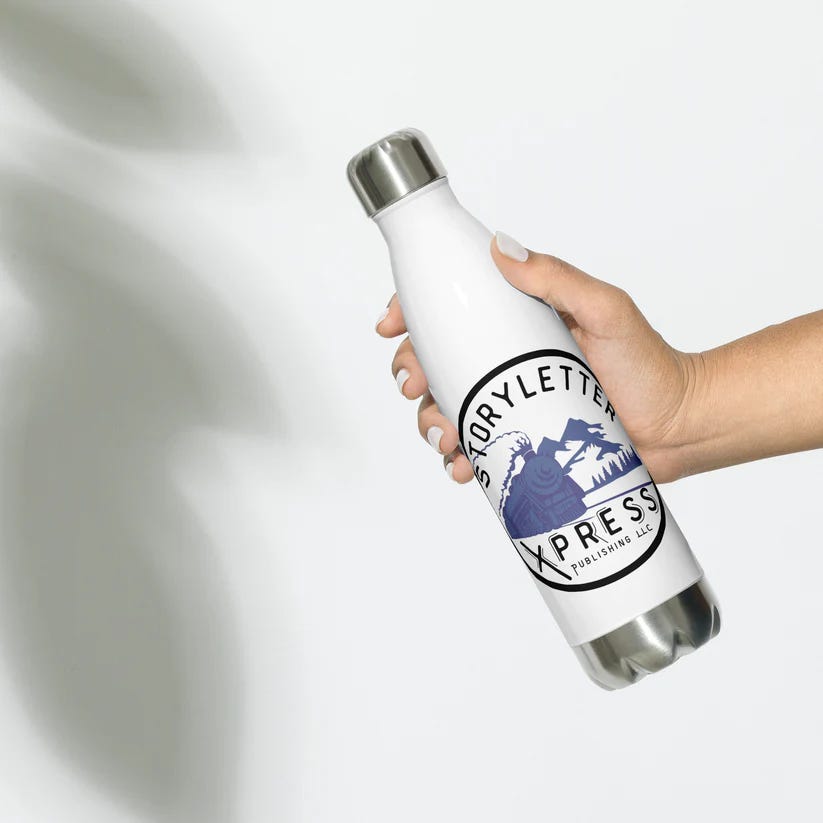To Build a Store | Using print on demand to create additional revenue streams
XPress Access | April 2023
The world is digitizing. Metaverses are taking shape all around us. Automation is the new normal. Almost anything can be delivered without meeting those involved with its design, production, or shipping—the tap of a button molds reality.
Say we time-traveled back 100 years ago. Could someone from that era be convinced that they could set up an online store, digitally render products, and manage all the inventory in another state for a profit without breaking a sweat? Funnily enough, they’d likely be more convinced that time travel was real since “The Time Machine” by H.G. Wells came out not long before in 1895.
I currently operate my merchandising store called The Storyletter Gift Shop. The product selection is slowly expanding, but it’s pretty basic for the most part. Right now, it’s tailored specifically to The Storyletter brand, but I aim to branch out to other products like books, maps, and artwork. Because I run the newsletter and the online store like a non-profit, all the proceeds go back into the community through paid subscriptions to other writers, original fiction purchases, and cash prizes for contests.
The point of this month’s XPress post isn’t to convince you to set up an online store but to explain the costs and headaches that come with it while also breaking down the basic steps for setting one up. Here’s a quick guide that may help you get started:
The Storyletter has been running a series called “To Build,” placing an emphasis on the basic tenets surrounding writing fiction online and establishing yourself as an independent creator. If you’d like to read the topics covered thus far, here’s the list:
The Concept in a Nutshell
I’ve always gravitated toward personal designs on products. Something about it is rewarding as if the tangible nature of the object is the manifestation of my dreams. Sort of like how it might feel to hold a self-published book in your hands. Sigh. Someday!
For an indie author, operating a store comes down to branding, which I covered in To Build a Brand. I like to think of George Lucas when he decided to retain the franchise’s merchandising rights. By controlling the merchandising rights, Lucas created a vast array of products. This helped generate revenue for the franchise and kept the Star Wars brand in the public eye, and created a sense of cultural relevance and excitement that contributed to the franchise's continued success.
Another great example is Brandon Sanderson’s online shop, where he sells all his books, collectibles, and general merchandise through an umbrella company known as Dragonsteel Entertainment. The success of operating his business with an online store will only benefit him further as the popularity of his books continues to grow.
Some of the perks of operating an online store can include:
Fans can support you while getting something in return
Free advertising from sold products
Additional revenue streams
Exciting alternatives for exploring your stories like maps, guides, and artwork
Exclusive or rare collectibles
Brand recognition and relevance
It’s not an all-inclusive list, but I think it highlights some potential positives to consider. Are you sold yet? If not, no worries. It’s not for everyone. Something to keep in mind is that almost none of this is free. There are costs to this route, which I’ll break down as I present the multiple facets of creating your storefront.
Designing merchandise with Canva
You’re going to want to have personal designs to put on your products. I love Canva for this very reason. I can’t say enough good things about it. Canva is a popular graphic design platform offering various tools and features to help users create and manage their brands. I design everything in Canva. Then I port it into Printful to apply it to my products.
Canva allows you to create a brand kit, which includes your brand's colors, fonts, and logos. This ensures that your designs are consistent and aligned with your brand identity. There’s a wide range of design templates for branding materials, such as business cards, social media posts, flyers, and more. You can choose a template and customize it with your brand kit to create professional-looking designs quickly and easily.
I upgraded to Canva Pro for $12.95/month, a paid subscription service offering a larger library of design templates, including premium templates that are not available in the free version, as well as stock images and videos. Canva Pro has advanced features such as the ability to resize designs, create animated graphics, and access to custom fonts. The main reason I upgraded was to be able to remove the background from my logos.
Once you have some designs, let’s move on to the next step: choosing a service to deliver your products.
Where to find the products
Next, you’ll want to find a service with the products you want to sell. Print on demand (POD) is a business model enabling you to sell custom-designed products without holding inventory. In a POD business, you create the designs, and a third-party supplier prints and ships the products directly to the customer. The supplier handles everything from printing and packaging to shipping and handling.
They typically offer a range of products, such as t-shirts, hoodies, mugs, and phone cases, which can be printed with your custom designs. Once you set up an account with a POD service, you can start designing and uploading your artwork to their platform. When someone orders a product with your design, the POD service will print and ship the item to the customer on your behalf.
At first, I had a Sellfy store, which functioned as a POD service and web host all-in-one. I wasn’t satisfied with the selection of products and the lack of quality control, so I decided to fork up the cash to “upgrade” to a different service. I accidentally chose Printify, thinking it was Printful (mixing it up with Shopify in my head), then made a Printful account. Whew! Lots of time and energy wasted. Or was it? I experimented with the different services and ultimately liked Printful the best.
There are no upfront or monthly fees to use Printful. You only pay for the products and shipping when an order is placed. The cost of each product varies depending on the item and printing method. You profit from the difference in the Printful cost versus the product price. I chose to include shipping in the price of the product, which does inflate the cost per item, but I read that a large number of shoppers abandon their cart when they see shipping fees at checkout.
Here are some popular POD companies to check out:
Printful - offers a wide range of products, good quality, and excellent customer service.
Printify - similar to Printful, but with slightly lower prices and a larger selection of products.
Gooten - offers competitive prices, good quality, and a large selection of products.
Teelaunch - specializes in custom apparel but also offers other products like mugs, phone cases, and more.
Scalable Press - offers a large selection of products and competitive pricing, emphasizing quality control.
How to get those products in front of customers
The next major step is to get your finalized products out there for sale. Where POD services are more behind the scenes, an online store is the face of your brand and company.
As I mentioned above, Sellfy functioned as a 2-in-1 convenient service, but it severely limited my options regarding my store's products and the storefront's aesthetics. I’d heard a lot about this service called Shopify, so I looked into it.
Shopify is an all-in-one eCommerce platform that allows businesses to create and manage online stores. It provides various tools and features to help businesses design, launch, and promote their online stores, including customizable templates, secure payment processing, shipping and fulfillment management, and analytics and reporting. With Shopify, businesses can sell products online, in person, and on social media platforms, making it a versatile and comprehensive eCommerce solution.
However, it’s not cheap. Shopify offers three pricing plans: Basic Shopify, Shopify, and Advanced Shopify. The Basic Shopify plan costs $29 per month and includes features such as unlimited products, 24/7 support, and fraud analysis. The Shopify plan costs $79 monthly and includes additional features such as gift cards, professional reports, and abandoned cart recovery. The Advanced Shopify plan costs $299 per month and includes even more advanced features, such as an advanced report builder, third-party calculated shipping rates, and more.
In addition to the monthly fees, Shopify also charges a transaction fee for each sale made through their platform, which ranges from 0.5% to 2%, depending on the pricing plan you choose and the payment gateway used.
I went with the Basic Shopify plan. I got a deal where I paid upfront for 2 years, which was significantly cheaper. Each service has free trials and special offers, so take advantage of that. It comes down to preference and functionality. For example, maybe you run everything through WordPress; a WooCommerce integration might make more sense for your setup. There are a ton of variables at play. But don’t get overwhelmed. They’ve streamlined the setup phase pretty well.
Here are some other online stores you can check out:
WooCommerce - a WordPress plugin that lets you create an online store and sell products directly from your website.
BigCommerce - a powerful eCommerce platform that allows you to create a professional online store with ease.
Magento - a free, open-source eCommerce platform that offers advanced features and flexibility for building an online store.
Volusion - a user-friendly platform that allows you to create a beautiful online store without any coding knowledge.
Squarespace - a popular website builder that offers eCommerce functionality and beautiful templates for creating an online store.
Wix - a website builder that offers eCommerce functionality and a drag-and-drop interface for building an online store.
Shift4Shop - a feature-rich eCommerce platform that offers everything you need to build and run an online store.
PrestaShop - a free, open-source eCommerce platform that offers a wide range of features and customization options.
What else is there to know?
I’ll conclude the post with a few additional tidbits to keep in mind and a cost-level expectation for running an online store.
Domain names - If you want your store to stand out or be easy to find, you must purchase a domain name. This is in lieu of the generic domain that some sites provide. For mine, I ended up buying storyletter.shop. It’s super easy to remember and fits the brand!
Product prices - You’ll want to calculate your prices to the cent and ensure you aren’t losing money. Remember that POD services charge you first whenever a customer makes a purchase, and then you get the money when it’s processed from the customer, which should offset the amount withdrawn from your account with the small difference in profit on top.
Social media integration - Some apps like Instagram allow you to integrate your products into your profile. This allows people online to easily browse your products without leaving the app and even make purchases. Some additional steps are involved here, but it’s a viable option to increase sales.
Taxes - Remember that the profit you make on sales will be taxed, so either calculate that into the product's price or set it aside for the end of the year. I also had to go through a process for selling online in Utah, facilitated through Shopify, thankfully. That was an additional cost I hadn’t expected.
Costs will vary depending on your choices, but expect at least $500/year to keep a basic-level online store running. This doesn’t include additional processing fees, marketing, or charges to function as a business in your state. Make sure it’s something that you can turn profitable quickly!









Great post Winston and I have several items from your store that I really enjoy. Thanks
Wow, this is super informative! I didn't realize there were so many store options out there. It's all a bit daunting, but this makes the idea of a store, should I ever decide to try it, a little less stressful!